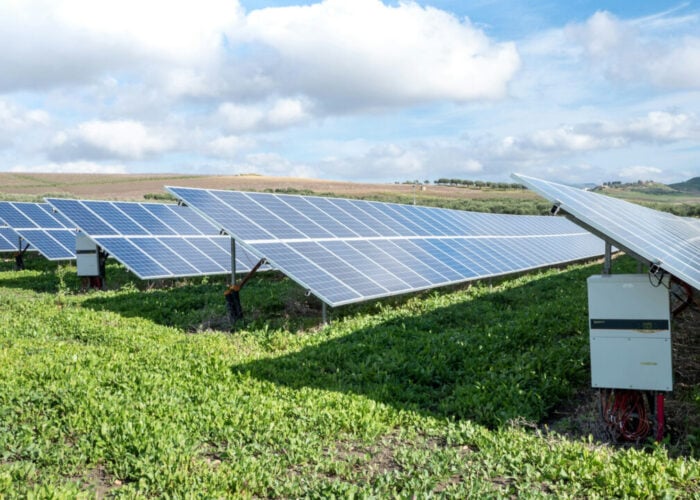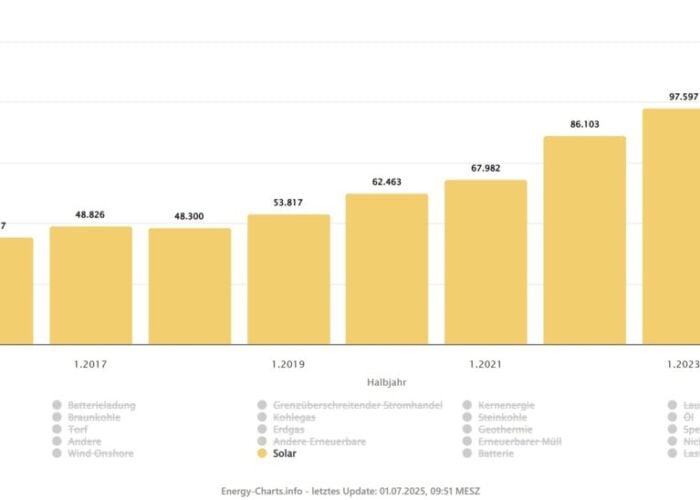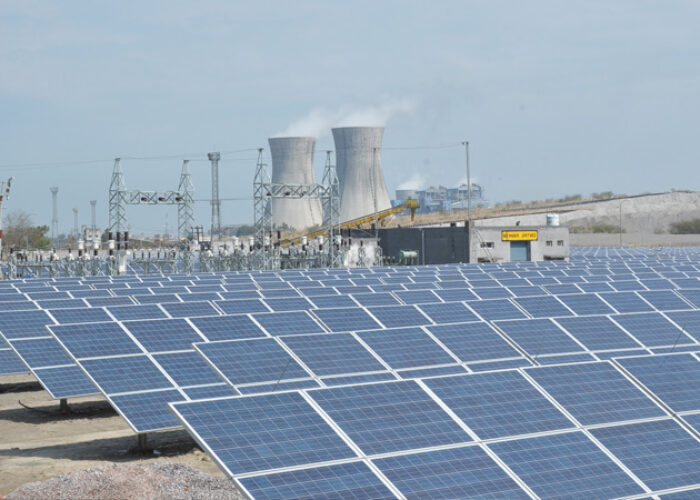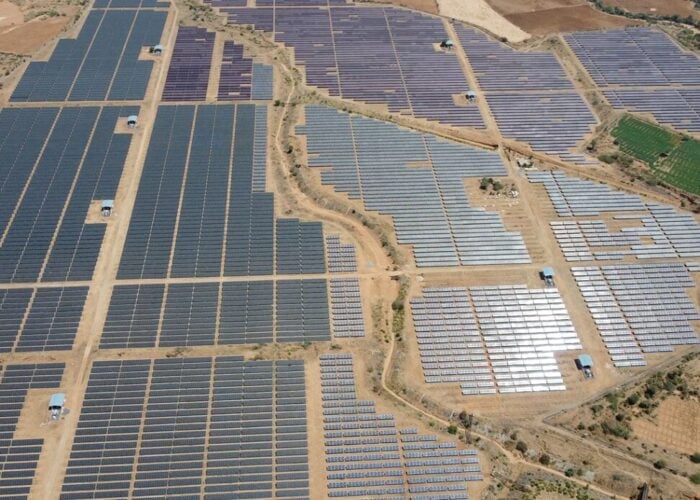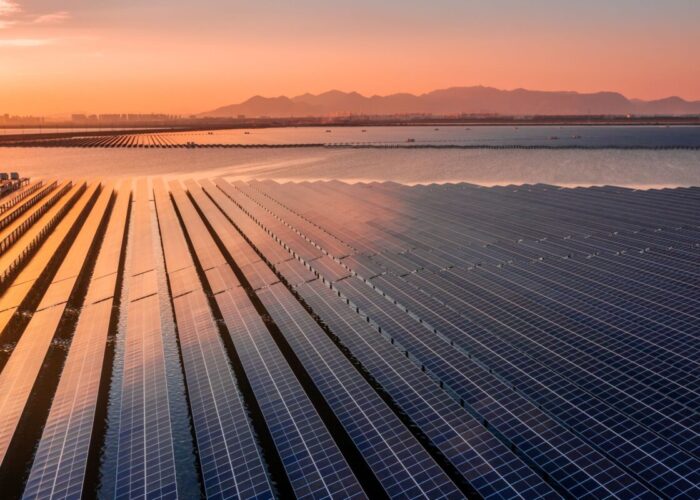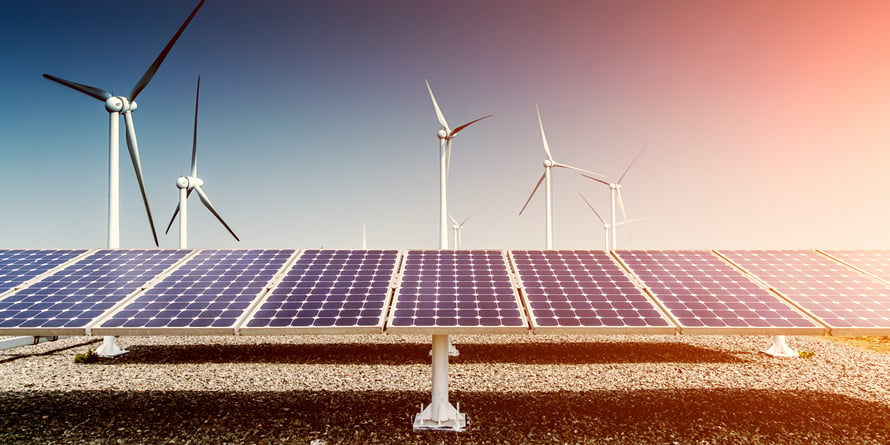
Solar and wind generated a record 9.8% of global electricity during the first six months of 2020, but further gains are needed if Paris Agreement targets are to be met, a new report has said.
Generation from both renewable energy sources rose 14% in H1 2020 compared with the same period of 2019, while coal generation tumbled 8.3%, according to the analysis of 48 countries carried out by climate think tank Ember.
Unlock unlimited access for 12 whole months of distinctive global analysis
Photovoltaics International is now included.
- Regular insight and analysis of the industry’s biggest developments
- In-depth interviews with the industry’s leading figures
- Unlimited digital access to the PV Tech Power journal catalogue
- Unlimited digital access to the Photovoltaics International journal catalogue
- Access to more than 1,000 technical papers
- Discounts on Solar Media’s portfolio of events, in-person and virtual
Since the Paris Agreement was signed in 2015, solar and wind have more than doubled their share of global electricity generation, rising from 4.6% to 9.8%, while many large countries have posted similar transition levels to both renewable sources: China, Japan and Brazil all increased from 4% to 10%; the US rose from 6% to 12%; and India’s almost trebled from 3.4% to 9.7%.
The gains come as renewables capture market share from coal generation. According to Ember, the fall in coal generation was as a result of electricity demand dropping globally by 3% due to COVID-19, as well as due to rising wind and solar. Although 70% of coal’s fall can be attributed to lower electricity demand due to the pandemic, 30% is because of increased wind and solar generation.
Indeed, an analysis published last month by EnAppSys found generation from Europe’s solar PV fleet hit an all-time high in Q2 2020, driven by ideal weather conditions and a collapse in power demand associated with COVID-19. European solar generated around 47.6TWh throughout the three months ended 30 June, helping renewables take a 45% share of the total electricity mix, equating to the largest share of any asset class.
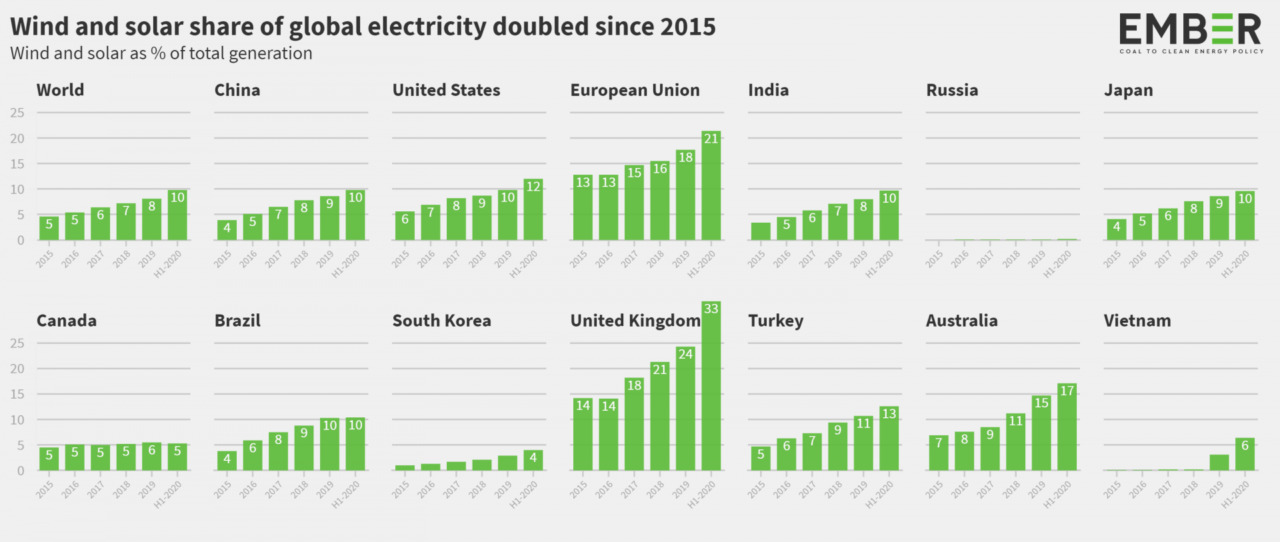
Insufficient progress
Despite the rapid trajectory from coal to wind and solar over the last five years, progress is so far insufficient to limit global temperature rises to 1.5 degrees, according to Ember. Dave Jones, senior electricity analyst at Ember, said the transition is working, but it’s not happening fast enough.
“Countries across the world are now on the same path – building wind turbines and solar panels to replace electricity from coal and gas-fired power plants,” he said. “But to keep a chance of limiting climate change to 1.5 degrees, coal generation needs to fall by 13% every year this decade.”
Even in the face of a global pandemic, coal generation has only reduced 8% in the first half of 2020. The IPCC’s 1.5 degree scenarios show coal needs to drop to just 6% of global generation by 2030, from 33% in H1 2020.
While COVID-19 has resulted in a drop in coal generation, disruptions caused by the pandemic mean total renewables deployment for this year will stand at around 167GW, down some 13% on deployment last year, according to the International Energy Agency (IEA).
In October 2019, the IEA suggested that as much as 106.4GW of solar PV was to be deployed globally this year. However, that estimate has dropped to around the 90GW mark, with delays to construction and the supply chain, lockdown measures and emerging problems in project financing stymying projects from completing this year.

